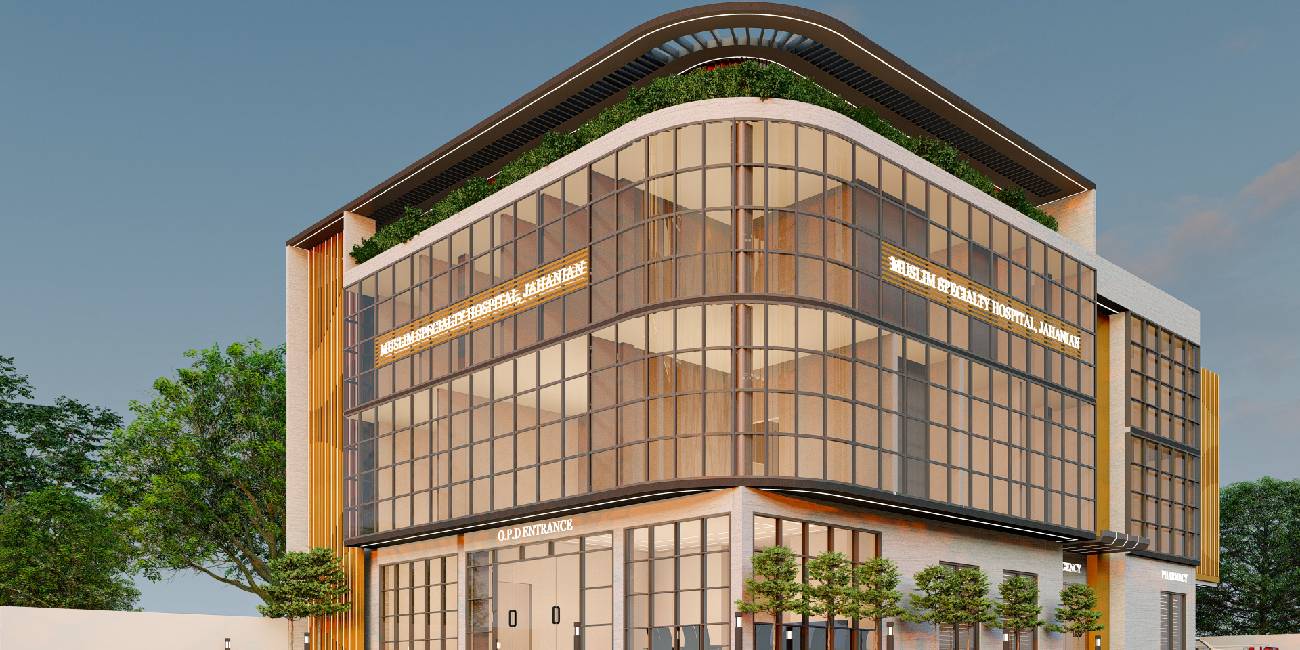
HOSPITAL DESIGN HUB Hospital Design Innovations: Case Studies from Iraq
Hospital Design Innovations: Case Studies from Iraq
Innovative hospital design is crucial for meeting the unique challenges in Iraq, where healthcare facilities must be resilient, efficient, and culturally sensitive. The following case studies highlight how hospitals in Iraq have incorporated innovative design solutions to address these challenges and improve healthcare outcomes.
1. Imam Hussein Medical City, Karbala
Overview: Imam Hussein Medical City in Karbala is a state-of-the-art healthcare complex designed to serve the religious pilgrimage city’s large population and the millions of visitors who come annually. This facility combines advanced medical technology with culturally appropriate design to meet the needs of the local and visiting populations.
Innovations:
- Cultural Integration: The design incorporates Islamic architectural elements, such as arches and geometric patterns, to create a welcoming environment that resonates with local cultural values. The facility also includes prayer spaces and separate waiting areas for men and women, reflecting the cultural and religious practices of the region.
- Energy Efficiency: The hospital employs energy-efficient systems, including solar panels and high-performance insulation, to cope with Karbala’s hot climate. These features help reduce operational costs and minimize the environmental impact.
- Patient-Centered Design: The hospital layout emphasizes patient comfort and ease of navigation, with clearly marked zones for different services and ample natural lighting in patient rooms and public areas.
Impact: This hospital has set a new standard for healthcare facilities in religiously significant areas by blending modern medical capabilities with cultural sensitivity, enhancing patient experience, and ensuring sustainable operations.
2. Basra Children’s Hospital, Basra
Overview: Basra Children’s Hospital, funded by various international donors, was designed to provide specialized care for pediatric patients in Iraq’s southern region. The hospital’s design focuses on creating a healing environment for children while addressing the harsh climatic conditions of Basra.
Innovations:
- Healing Environment: The hospital features vibrant colors, child-friendly artwork, and play areas to create a positive and comforting environment for young patients. The design aims to reduce stress and anxiety for children undergoing treatment.
- Advanced Air Filtration: Given Basra’s frequent dust storms, the hospital is equipped with an advanced HVAC system with HEPA filters and air purification units to maintain high indoor air quality, crucial for vulnerable pediatric patients.
- Water Management: The hospital uses a water recycling system to manage water scarcity issues. Greywater from sinks and showers is treated and reused for irrigation and non-potable purposes, ensuring sustainability in water usage.
Impact: Basra Children’s Hospital has become a model for pediatric care in Iraq, combining cutting-edge medical technology with a supportive environment tailored to the needs of children. Its focus on sustainability and air quality also addresses the specific environmental challenges of the region.
3. Parliamentary Clinic, Baghdad
Overview: The Parliamentary Clinic in Baghdad is a specialized healthcare facility designed to serve government officials and the surrounding community. This facility incorporates modern security and technology solutions while ensuring patient privacy and comfort.
Innovations:
- High Security: Due to its location in a sensitive area, the clinic incorporates advanced security features, including blast-resistant materials, controlled access points, and surveillance systems, ensuring the safety of patients and staff.
- Smart Technology Integration: The clinic uses smart building technology to monitor and control lighting, HVAC, and security systems. This allows for efficient operation and quick adjustments based on real-time data.
- Modular Design: The facility was constructed using modular design principles, allowing for rapid assembly and future expansion if needed. This approach also minimized on-site construction time, reducing disruption in a high-security zone.
Impact: The Parliamentary Clinic demonstrates how healthcare facilities in politically sensitive areas can combine security with high-quality medical care. Its use of smart technology and modular construction also offers lessons for other healthcare projects in conflict-affected regions.
4. Azadi Teaching Hospital, Kirkuk
Overview: Azadi Teaching Hospital in Kirkuk is a major healthcare and educational institution serving Iraq’s northern region. The hospital has undergone significant renovations and expansions to incorporate modern medical technologies and improve its capacity.
Innovations:
- Teaching and Research Integration: The hospital’s design includes specialized spaces for medical education and research, including lecture halls, simulation labs, and research centers. This integration supports the training of the next generation of Iraqi healthcare professionals.
- Seismic Resilience: Located in a seismically active area, the hospital was designed with reinforced structures and shock-absorbing foundations to withstand potential earthquakes. This resilience is critical for ensuring the hospital remains operational during and after seismic events.
- Sustainable Energy: The hospital incorporates renewable energy sources, including solar panels and energy-efficient lighting, to reduce reliance on the local power grid and promote sustainability.
Impact: Azadi Teaching Hospital has become a key center for healthcare and medical education in northern Iraq. Its focus on resilience and sustainability ensures it can serve the region’s needs well into the future, even in the face of natural disasters.
5. Nasiriyah Heart Center, Nasiriyah
Overview: The Nasiriyah Heart Center is a specialized cardiac care facility designed to provide advanced treatment for cardiovascular diseases in Iraq’s southern region. The hospital is equipped with the latest medical technology and designed to optimize patient outcomes.
Innovations:
- Cardiac Care Focus: The hospital’s design is tailored to the specific needs of cardiac patients, with specialized operating rooms, catheterization labs, and intensive care units equipped with the latest technology.
- Patient Flow Optimization: The layout of the hospital minimizes the distance between critical departments, such as the emergency room, operating theaters, and intensive care units, ensuring rapid response times and improving patient outcomes.
- Telemedicine Integration: The Heart Center includes telemedicine capabilities, allowing for remote consultations with international experts and extending its reach to patients in remote areas of southern Iraq.
Impact: Nasiriyah Heart Center has become a leading facility for cardiac care in Iraq, setting a benchmark for specialized healthcare services. Its innovative design and technology integration have improved patient outcomes and expanded access to life-saving treatments.
Conclusion
These case studies from Iraq illustrate how innovative hospital design can address the country’s unique challenges, from harsh climates and security concerns to cultural considerations and economic constraints. By incorporating advanced technology, sustainable practices, and culturally sensitive design elements, these hospitals not only meet the immediate healthcare needs of their communities but also serve as models for future healthcare infrastructure development in Iraq.
4o




